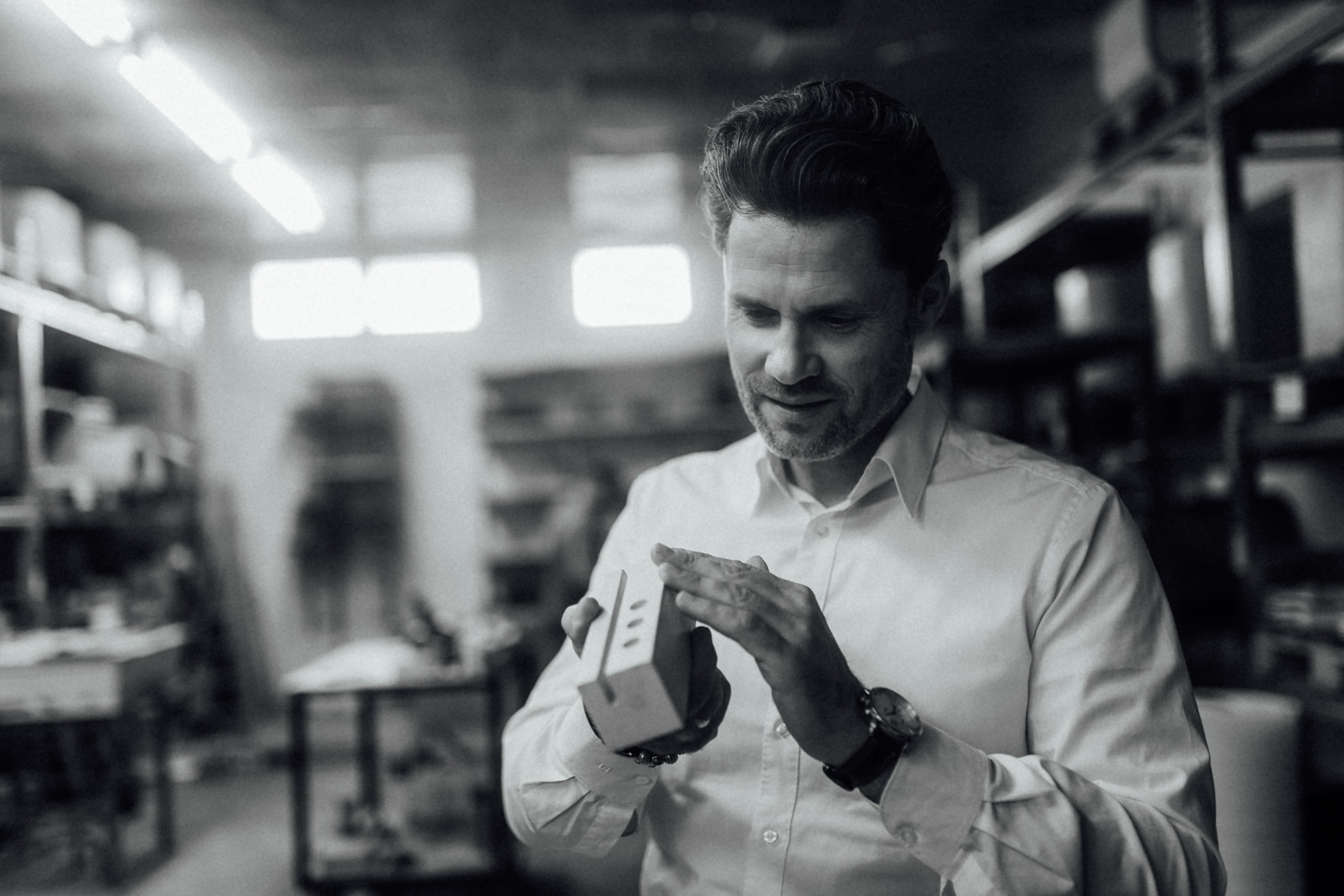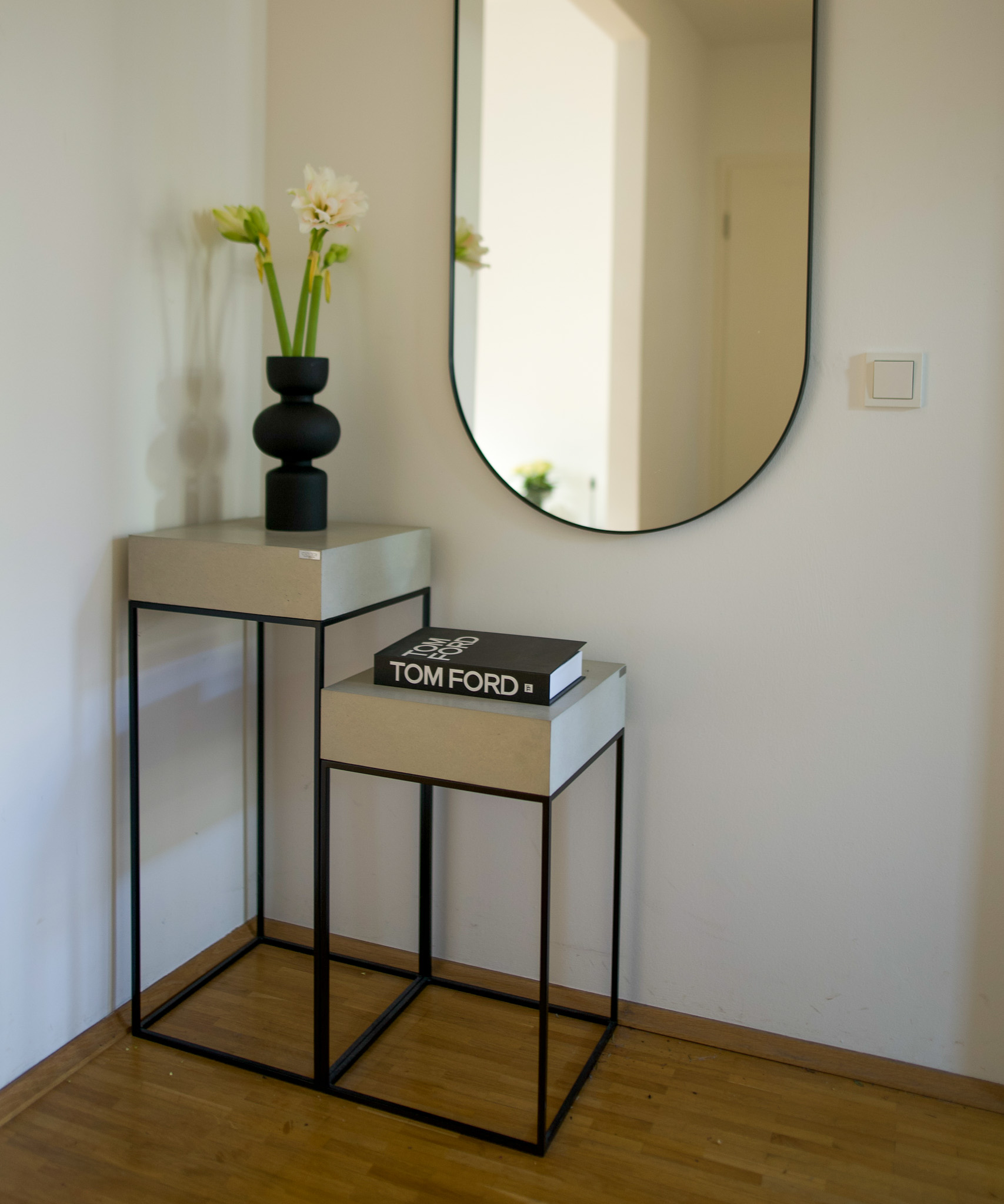
Sustainability
At a time when renewable raw materials and resources are becoming increasingly important, we at CO33 have also made it our mission to ensure that all our processes are environmentally friendly and sustainable. Our furniture consists mainly of sand, water, gravel and cement (as an adhesive). The production of cement is energy and CO2 intensive. Every year, 15.5 billion cubic metres of concrete are used worldwide. 85% of the resulting CO2 emissions are caused by the use of cement. The development of new processes is being further accelerated. Alternative production methods, hydrogen combustion and waste gas power generation are particularly promising. The entire concrete industry is aiming for climate neutrality by 2050. By 2030, CO2 emissions are to be reduced by as much as 43% compared to 2005. A special feature of concrete is carbonation. This means that the concrete binds up to 20% of the CO2 produced during the manufacturing process over the course of its life.
Sustainability through conscious resource utilisation and procurement
Our furniture from the Opus Design collection is not only very elegant thanks to its particularly thin form, but also conserves resources. Thanks to the use of particularly strong concrete (UHPC), less material is required for the production of our furniture. Reducing the cement content from 20% to just 7% is not only effective, but also environmentally friendly. The regional and local sourcing of our manufacturing materials is important to us in order to avoid long transport routes.
Sustainability through recycling
Our furniture is made from 100% recyclable materials, which means it is 100% recyclable. Should you ever want to choose another piece of furniture, it can be disposed of at any time, even in individual parts.
Sustainability through longevity
With good care, our furniture will last a lifetime (or two). Thanks to their timeless design, they will find their place in any style. UHPC (particularly strong concrete) has a service life of approx. 200 years. If used in furniture and for private domestic use, a significantly longer period can be expected.
Comparison with other products
Cement production emits 0.59 kg of CO2 per kilogramme of cement. Our 100 kg Opus Primo bench therefore produces approx. 4.13 kg of CO2. A similar value can be expected for paper production. Between 0.42kg - 0.8kg CO2 per kilogramme of paper can be expected as an environmental impact. Polythene, on the other hand, produces 2.2kg - 3.1kg of CO2 per kilogramme produced, depending on how the waste is recycled. Here are a few more examples from the food industry (kg CO2 per litre/kg)
Swiss beef 12-13
Cow's milk 1.63
Lentils 0.7
Soya milk 0.7
These figures not only show that we should eat more consciously, but also that a bench from our Opus collection only produces around a third as much CO2 as a kilo of beef or 3 litres of cow's milk. But unlike food, this CO2 is only produced once and the bench can last for decades. The problem with cement is the amount required by mankind. But in the end, as with all resources, it comes down to conscious utilisation.
Sources:
https://thomasbeton.de/nachhaltigeit/beton-und-kohlendioxid-co2
https://www.baunetzwissen.de/beton/fachwissen/herstellung/betonherstellungundklimaschutz-7229519
https://www.handelsblatt.com/unternehmen/handel-konsumgueter/ verpackungsindustrieoekobilanz-sechs-mythen-ueber-plastik-und-papier/ 27404644.html
https://www.wwf.ch/de/unsere-ziele/fleisch-und-milchprodukte




.png)